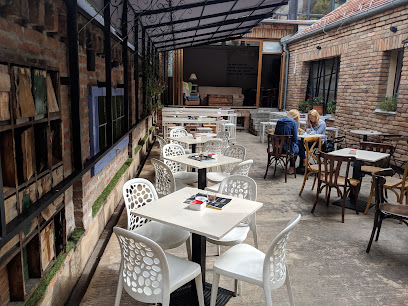
Explore the Treasures of the National Museum of Serbia
Immerse yourself in the rich history and art at the National Museum of Serbia in Belgrade, featuring extensive collections from prehistoric to modern times.
Discover the National Museum of Serbia, a cultural gem in Belgrade, showcasing an extensive collection of art and historical artifacts that span centuries. From archaeological finds to modern masterpieces, this museum offers a captivating journey through Serbia's rich heritage.
A brief summary to National Museum of Serbia
- Trg republike 1а, Belgrade, Стари град, 104303, RS
- +381608075020
- Visit website
Local tips
- Visit on Thursdays or Saturdays for extended hours, allowing more time to explore the exhibits.
- Consider joining a guided tour for in-depth knowledge of the collections and their historical significance.
- Check the museum's website for current exhibitions and events to make the most of your visit.
- Don't miss the museum's café for refreshments and a lovely atmosphere to relax after your tour.
Getting There
-
Walking
If you are in the center of Belgrade, start at the Republic Square (Trg Republike). From there, the National Museum of Serbia is just a short walk away. Head towards the statue of Prince Mihailo in the square, then walk straight towards the museum located at Trg Republike 1a. The museum is positioned on the eastern side of the square, easily visible with its grand entrance.
-
Public Transport - Tram
If you are further away, you can take a tram. Look for tram lines 2, 5, or 10, which all stop at the Republic Square. Board the tram at the nearest tram stop to your location, and ride until you reach the 'Trg Republike' stop. Once you disembark, the National Museum of Serbia will be right in front of you.
-
Public Transport - Bus
Alternatively, you can use the bus system. Buses 83 and 95 will take you to the Republic Square. Find the nearest bus stop for your route, board the bus, and ride until you reach the 'Trg Republike' stop. After getting off, the museum is directly in view across the square.
-
Taxi or Rideshare
For a more comfortable option, you can use a taxi or rideshare service. Simply enter 'National Museum of Serbia, Trg Republike 1a' as your destination. The driver will drop you off right in front of the museum.
Discover more about National Museum of Serbia
Iconic landmarks you can’t miss
Milennium Watch
0.1 km
Explore the Milennium Watch at Trg republike, Belgrade's iconic historical landmark, embodying the city's rich culture and vibrant history.
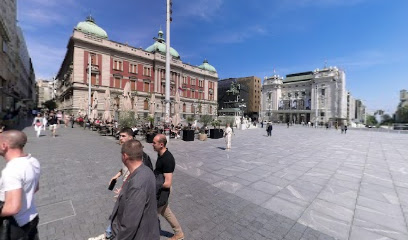
Studentski trg
0.3 km
Experience the vibrant pulse of Belgrade at Studentski Trg, a cultural hub surrounded by history, education, and lively local life.
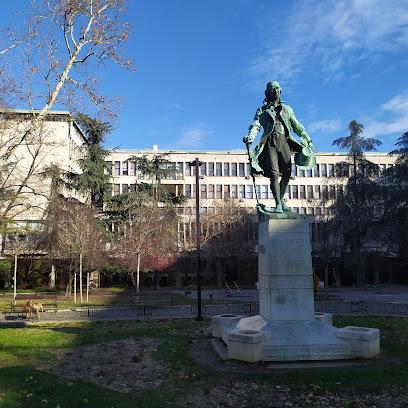
Kuća Stevana Mokranjca
0.3 km
Explore Kuća Stevana Mokranjca, a historical landmark in Belgrade celebrating the life and works of Serbian composer Stevan Mokranjac.
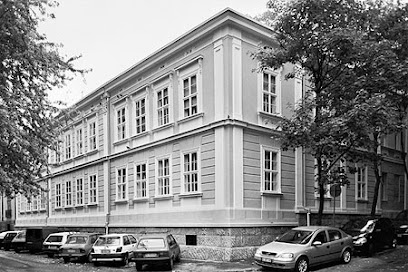
Banatska
0.4 km
Experience the refreshing charm of Banatska Fountain in Belgrade's historic Stari Grad, a perfect stop for travelers exploring this vibrant city.
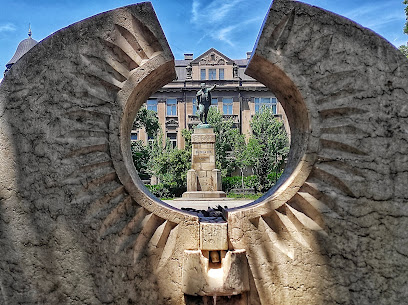
Česma kod Crvenog pevca
0.4 km
Uncover the treasures of Serbian heritage at Česma kod Crvenog Pevca, an enchanting open-air museum in the heart of Belgrade's Stari Grad.

Bezistan
0.4 km
Explore Bezistan, a stunning historical landmark in Belgrade's Stari Grad, where history, culture, and vibrant local life come together in a unique experience.
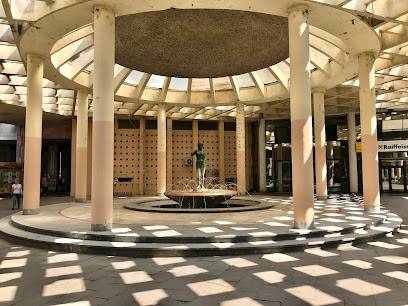
Statue of Nikola Pašić
0.5 km
Discover the Statue of Nikola Pašić in Belgrade: A historical landmark celebrating Serbian heritage and culture, a must-visit for every traveler.
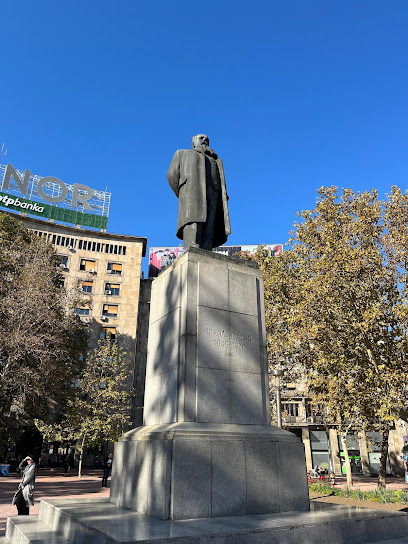
Palace Atina
0.5 km
Experience the majestic Palace Atina, a historical landmark in Belgrade, where rich history and stunning architecture come together.
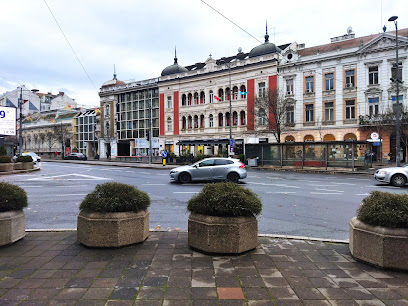
Nikola Pašić Square
0.5 km
Discover the vibrant charm of Nikola Pašić Square, a historic monument in Belgrade, rich in culture, greenery, and architectural beauty.
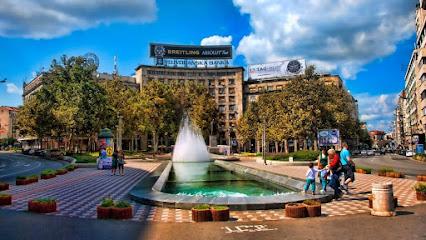
Manak's House
0.5 km
Explore the essence of Serbian culture at Manak's House, a museum offering a unique glimpse into the country's rich heritage and traditional lifestyle.
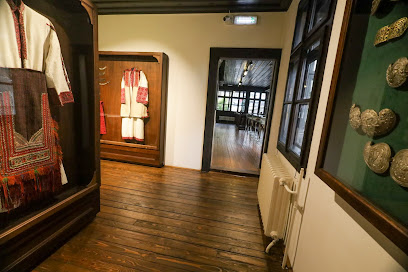
Historical Museum of Serbia
0.6 km
Discover the rich history of Serbia at the Historical Museum of Serbia, where centuries of culture and heritage come to life in captivating exhibits.
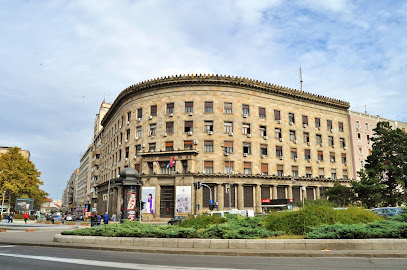
Krsmanovićeva kuća na Terazijama
0.6 km
Experience the elegance of Krsmanović's House, a historical gem in Belgrade's Terazije district, and explore the rich tapestry of Serbian history.
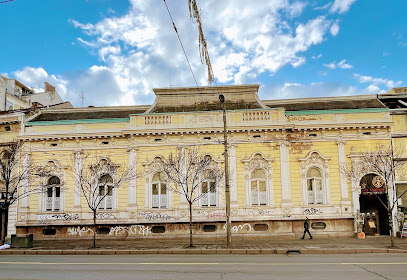
Znak Pitanja (Question Mark)
0.6 km
Experience the rich flavors of Serbian cuisine in a charming setting at Znak Pitanja, a beloved restaurant in the heart of Belgrade.
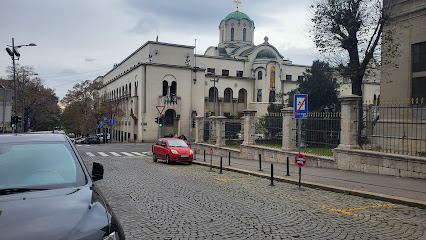
Konak kneginje Ljubice
0.6 km
Explore the rich history and elegant architecture of Konak Kneginje Ljubice, a museum that showcases Serbia's royal heritage in the heart of Belgrade.
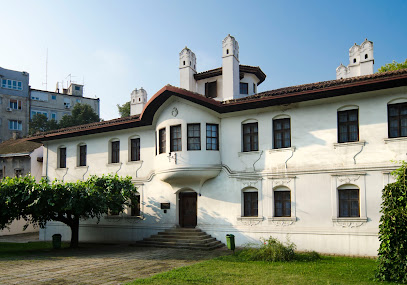
Savamala Hotel
0.6 km
Experience modern comfort and historical charm at Savamala Hotel, your gateway to exploring Belgrade's vibrant culture and nightlife.

Unmissable attractions to see
Prince Mihailo Monument
0.0 km
Discover the Prince Mihailo Monument in Belgrade: A historical landmark celebrating Serbian heritage and a vibrant cultural hub.
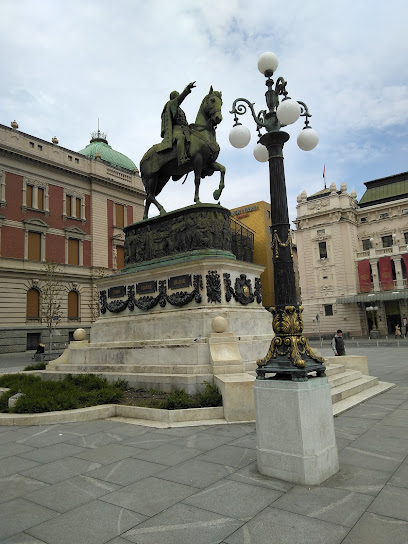
National Theatre in Belgrade
0.1 km
Experience the cultural heartbeat of Belgrade at the National Theatre, where art and history converge in a stunning architectural masterpiece.
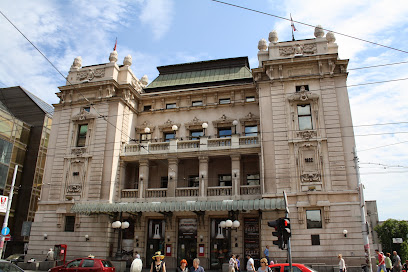
Republic Square
0.1 km
Discover the vibrant heart of Belgrade at Republic Square, a historical landmark rich in culture and surrounded by stunning architecture.
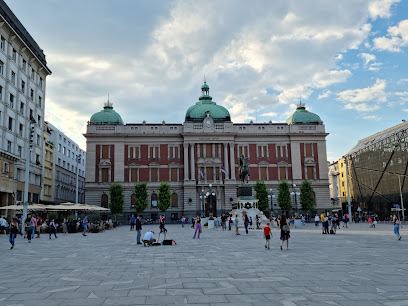
FountainVrelo
0.1 km
Experience the serene beauty and cultural depth of FountainVrelo, a must-visit tourist attraction in the heart of Belgrade.
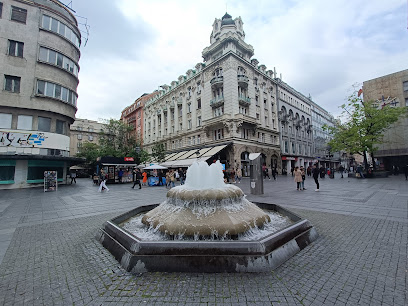
Spasićev pasaž
0.1 km
Discover the enchanting Spasićev pasaž in Belgrade – a historical landmark blending culture, beauty, and serene exploration.
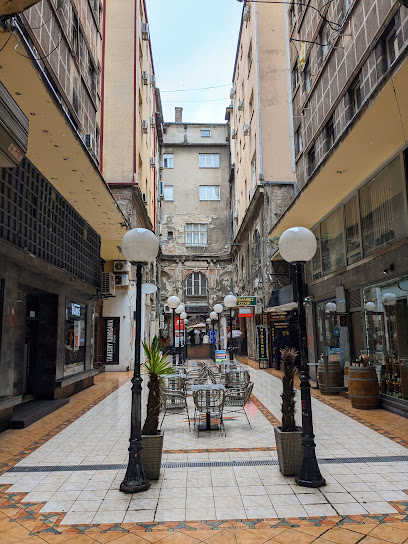
House of Kosta Milenković
0.2 km
Discover the architectural beauty and rich history of the House of Kosta Milenković, a hidden gem in Belgrade's historic Stari Grad district.
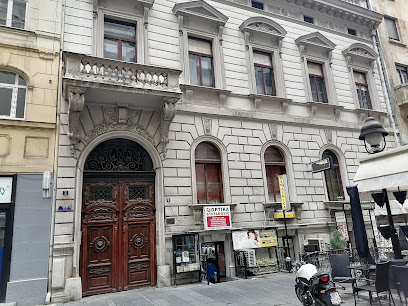
Segway Belgrade
0.2 km
Experience the vibrant heart of Belgrade on a thrilling Segway tour, blending fun, history, and culture in one unforgettable adventure.
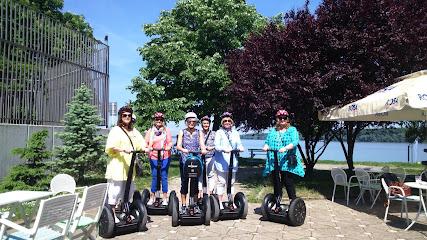
Stambena zgrada Đure Borošića U Ulici maršala Birjuzova
0.2 km
Discover the architectural beauty and historical significance of Đure Borošića Building in Belgrade, a must-see landmark in the heart of Stari Grad.
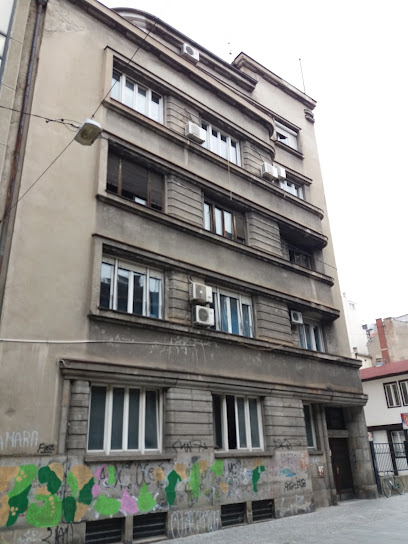
Delijska Česma
0.3 km
Explore Delijska Česma in Belgrade, a historical landmark that captures the essence of Serbian heritage and architectural beauty.
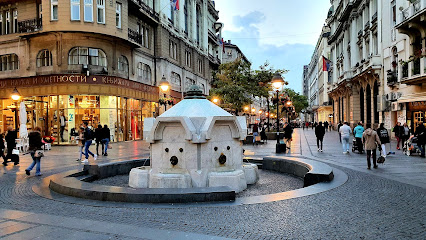
Kneza Mihaila
0.3 km
Discover the vibrant energy of Kneza Mihaila, Belgrade's iconic pedestrian street filled with shops, cafes, and rich cultural experiences.
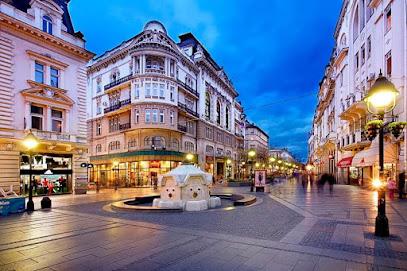
Kapetan Mišino zdanje
0.3 km
Explore Kapetan Mišino zdanje, a historical landmark in Belgrade, rich in culture and architectural elegance, perfect for history enthusiasts and travelers alike.

Belgrade Milestone
0.3 km
Discover the rich history and stunning architecture at Belgrade Milestone, a must-see historical landmark in the heart of Belgrade.

Gallery SANU
0.3 km
Explore Gallery SANU in Belgrade, a captivating art gallery showcasing contemporary Serbian artists in a vibrant cultural setting.
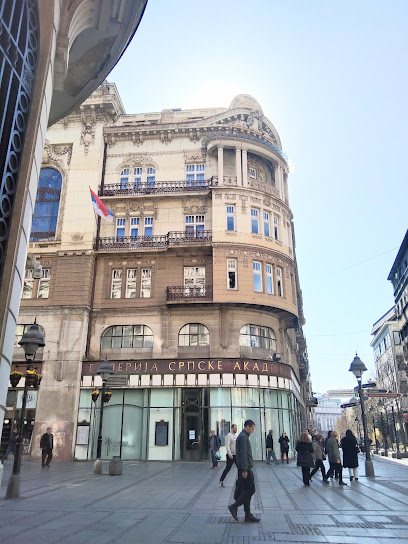
Museum of Broken Relationships / Belgrade
0.3 km
Explore the poignant tales of love and loss at the Museum of Broken Relationships in Belgrade, a unique museum experience that resonates with all visitors.
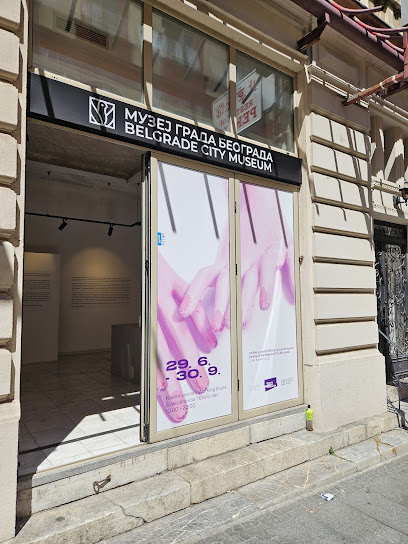
The student square
0.3 km
Experience the vibrant energy and rich history of Studentski Trg, a must-visit landmark in Belgrade's charming Old Town.

Essential places to dine
Seneca Cafe & Restaurant
0.2 km
Experience the best of Serbian cuisine at Seneca Cafe & Restaurant in Belgrade's historic Stari Grad district.
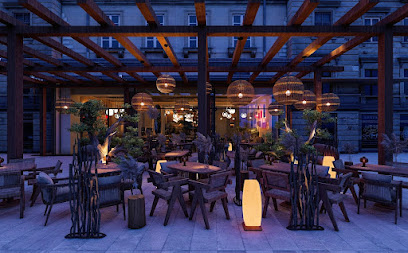
Mikan Restaurant
0.2 km
Experience the best of Serbian cuisine at Mikan Restaurant in Belgrade – where tradition meets taste in every dish.
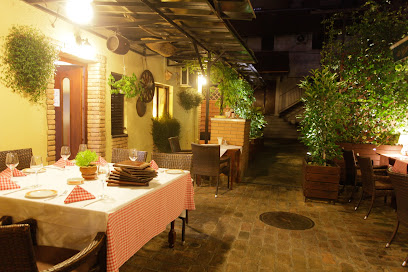
Little Bay
0.2 km
Experience culinary excellence at Little Bay in Belgrade - where exquisite flavors meet enchanting ambiance.
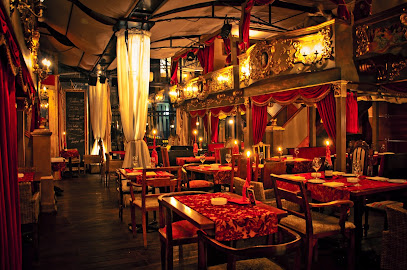
Delirium
0.3 km
Discover Delirium in Belgrade: A vibrant restaurant offering innovative cuisine and unique cocktails in a charming atmosphere.
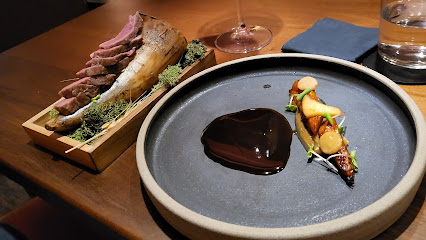
Restoran ISTOK
0.3 km
Savor authentic Vietnamese dishes in Belgrade at Restoran ISTOK – where tradition meets flavor.
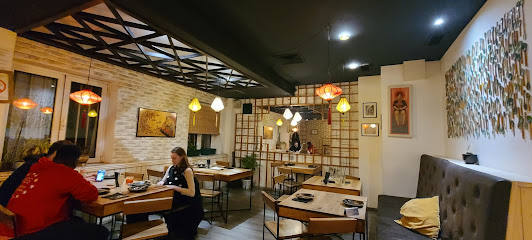
Restaurant "Šešir moj" (Skadarlija)
0.3 km
Experience authentic Serbian cuisine in Belgrade's historic Skadarlija district at Restaurant Šešir moj.
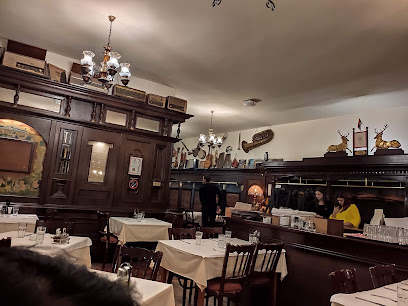
Iva New Balkan Cuisine
0.4 km
Experience authentic Balkan flavors with a modern twist at Iva New Balkan Cuisine in Belgrade – a culinary delight for every traveler.

Dva Jelena
0.4 km
Experience authentic Serbian cuisine at Dva Jelena, where traditional flavors meet lively entertainment in Belgrade's historic Skadarlija district.
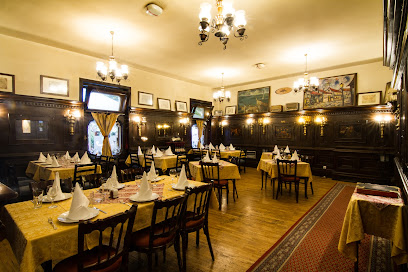
Restaurant Tchaikovsky
0.4 km
Experience authentic Serbian cuisine at Restaurant Tchaikovsky in Belgrade - where tradition meets elegance for an unforgettable dining experience.
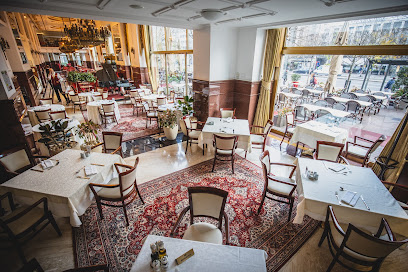
Tri šešira
0.4 km
Experience authentic Serbian cuisine at Tri šešira in Belgrade's historic Skadarlija district, where tradition meets flavor.
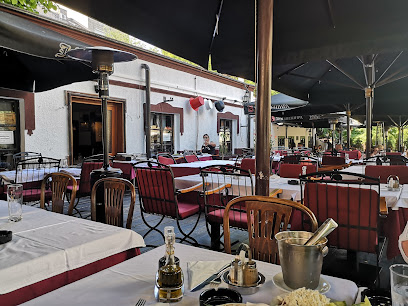
The Square Restaurant
0.4 km
Discover the flavors of Serbia at The Square Restaurant, where tradition meets modern culinary art in the heart of Belgrade.
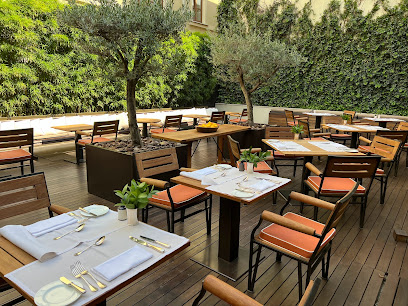
Casa Nova
0.4 km
Experience authentic Serbian cuisine at Casa Nova in Belgrade—where tradition meets modern dining excellence.

Restoran Mokum
0.4 km
Discover Restoran Mokum: A culinary haven in Belgrade offering a unique fusion of traditional Serbian flavors and modern cuisine.
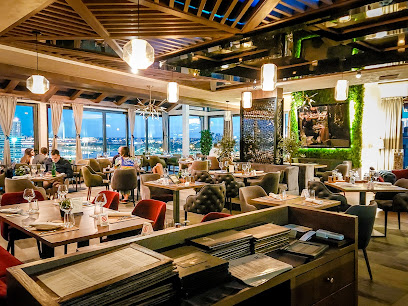
New Reset Restoran
0.4 km
Experience the vibrant culinary scene of Belgrade at New Reset Restoran - where tradition meets innovation in every dish.
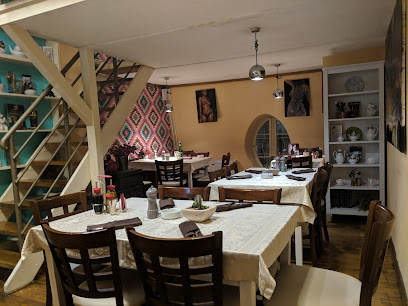
Mama Restaurant Belgrade
0.5 km
Experience modern dining at Mama Restaurant Belgrade - where exquisite flavors meet stylish ambiance.
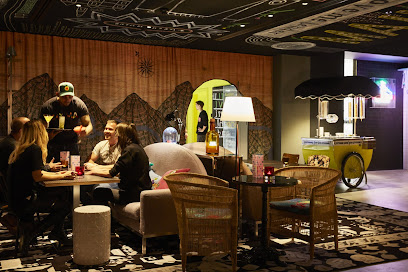
Markets, malls and hidden boutiques
*Zla Shtek* CBD & headshop & Streetwear
0.2 km
Explore Zla Shtek in Belgrade: A unique blend of CBD culture, trendy streetwear, and vibrant local lifestyle, perfect for every traveler.
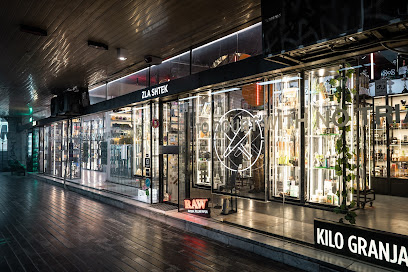
MiA Bgd concept store
0.2 km
Explore MiA Bgd Concept Store in Belgrade for unique gifts, local crafts, and a taste of Serbian culture.
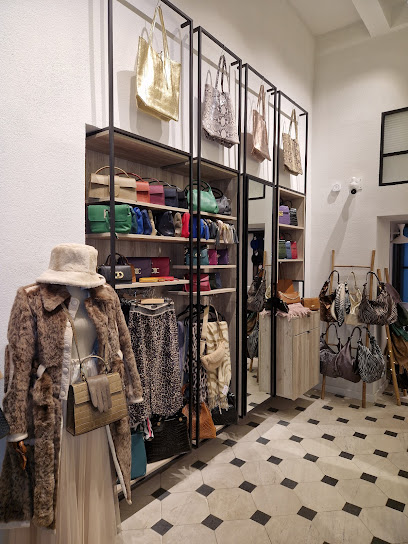
Vintage Beograd
0.2 km
Discover Vintage Beograd, Belgrade's ultimate vintage shop, filled with unique treasures and memories from the past, perfect for every vintage lover.
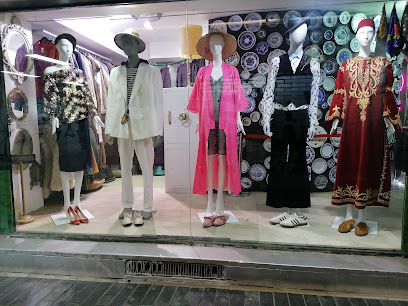
Belgrade Design District
0.2 km
Discover the creative heart of Belgrade at the Design District, featuring unique artisanal shops and a vibrant local culture.
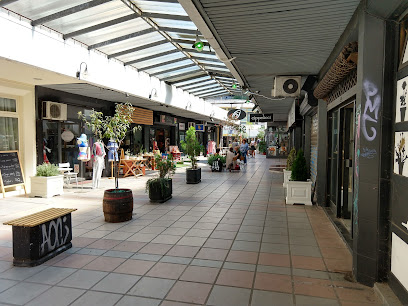
TRICIKL Gift Shop
0.2 km
Discover handcrafted treasures and unique gifts at TRICIKL Gift Shop in Belgrade, showcasing the best of Serbian culture and craftsmanship.

Hibi BG Shop
0.2 km
Explore Hibi BG Shop in Belgrade for authentic Serbian souvenirs and handmade crafts that embody the spirit of local culture.
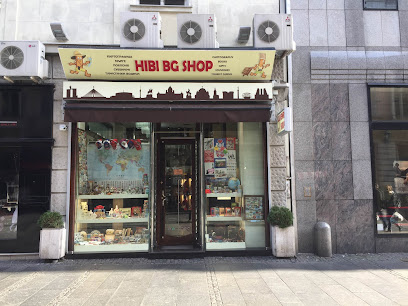
Designers OUTLET STORE
0.2 km
Explore the stylish Designers Outlet Store in Belgrade, where designer fashion meets unbeatable prices in the heart of the city.
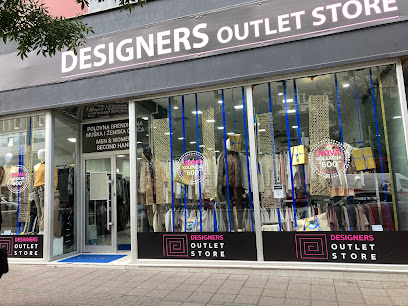
POKRET CONCEPT STORE
0.2 km
Discover the essence of Belgrade's fashion scene at Pokret Concept Store, offering a unique blend of local and international styles in a vibrant setting.
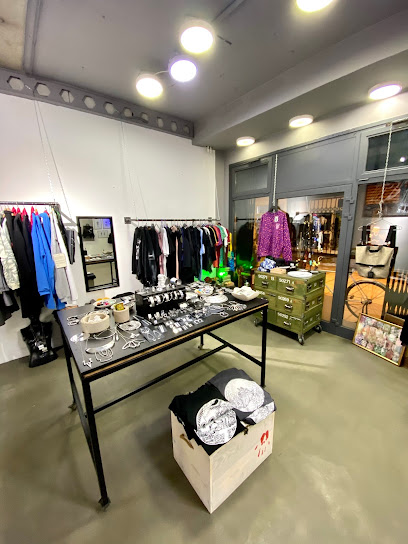
Nosimse
0.2 km
Explore Belgrade's vintage clothing gem, Nosimse, where every piece tells a story and fashion meets nostalgia.
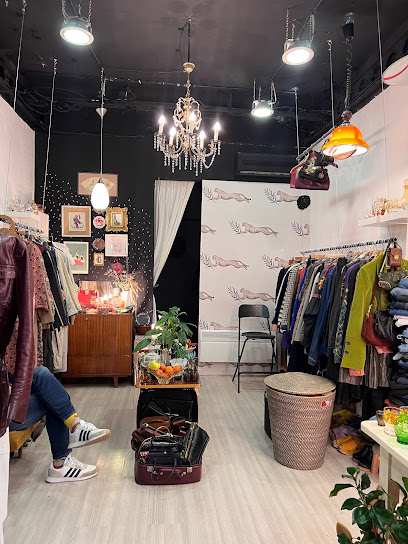
Vintage LUX boutique
0.2 km
Explore the unique fashion of Vintage LUX Boutique in Belgrade, a vintage clothing store that captures the essence of timeless style.
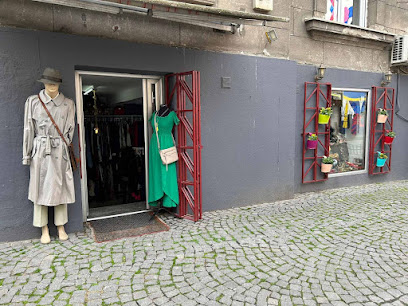
Bela vrana - Antiques decorative
0.2 km
Explore Bela Vrana in Belgrade for unique antiques and decorative treasures that capture the essence of Serbian history and craftsmanship.
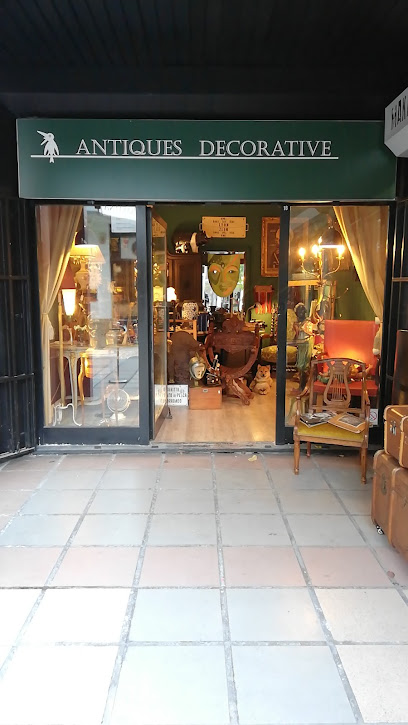
Felix Shop
0.3 km
Explore the eclectic Felix Shop in Belgrade for unique clothing and rock memorabilia that captures the city's vibrant culture and music scene.
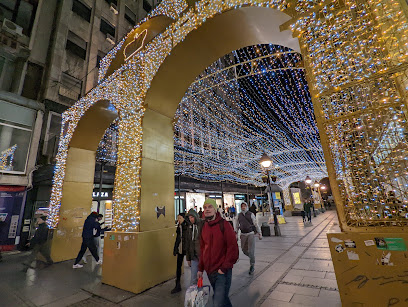
Knjizara Srpski Kutak
0.3 km
Explore Knjizara Srpski Kutak, Belgrade's gem for literature lovers, where stories come to life in a cozy and charming atmosphere.
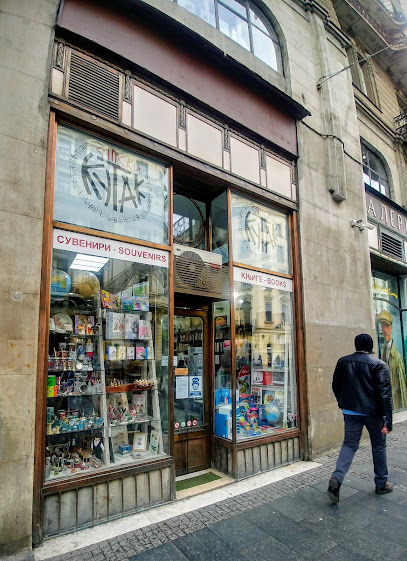
Urban Shop
0.3 km
Explore the vibrant skate culture of Belgrade at Urban Shop, your go-to destination for all things skateboarding.
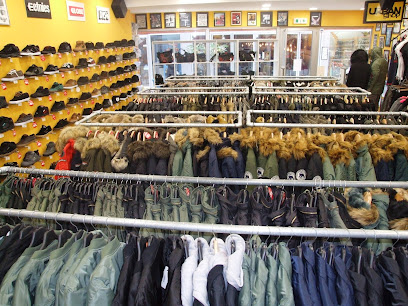
Souvenirs and Gifts
0.3 km
Explore Souvenirs and Gifts in Belgrade for unique local treasures and artisan crafts that capture the city's vibrant culture.

Essential bars & hidden hideouts
Holy Moly Cocktail Club
0.1 km
Experience innovative cocktails and vibrant nightlife at Holy Moly Cocktail Club in the heart of Belgrade, a must-visit for any cocktail lover.

Gecko
0.2 km
Discover authentic Irish flavors and lively ambiance at Gecko Pub in Belgrade, the perfect spot for a hearty meal and unforgettable nights.
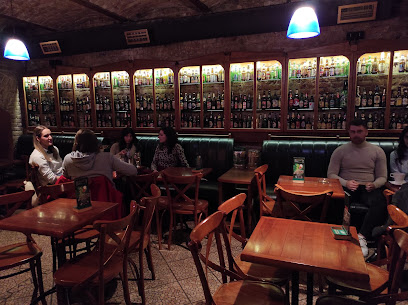
Ok.No
0.2 km
Discover Ok.No, a dynamic bar in Belgrade offering the perfect blend of relaxation, nightlife, and local flavors for an unforgettable experience.
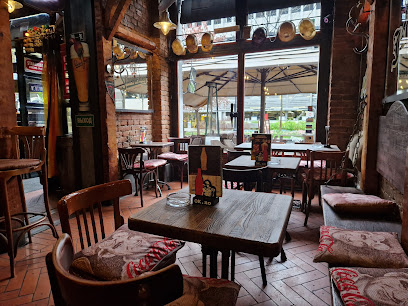
Wurst Platz Bar
0.2 km
Discover the vibrant atmosphere at Wurst Platz Bar, a top destination in Belgrade for beer, local cuisine, and live entertainment.
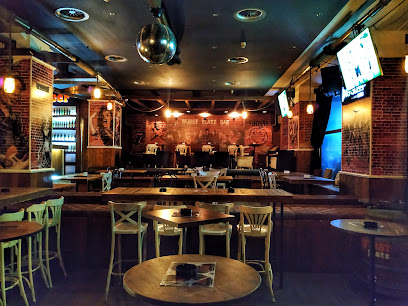
Queens Pub
0.2 km
Discover the vibrant atmosphere of Queens Pub, a must-visit spot in Belgrade's historic Stari Grad district, offering local and international drinks.
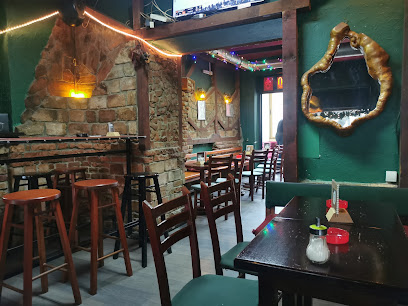
Bife bar
0.2 km
Experience the vibrant atmosphere and unique cocktails at Bife Bar in Belgrade's historic Stari Grad district.
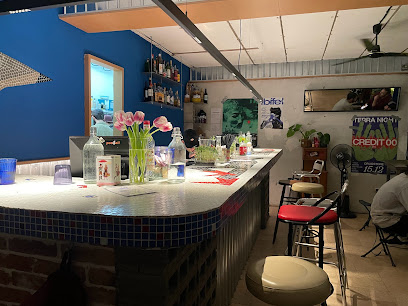
Gunners Pub
0.2 km
Experience the best of Belgrade’s craft beer scene at Gunners Pub, where vibrant atmosphere and delicious food pair perfectly with local brews.
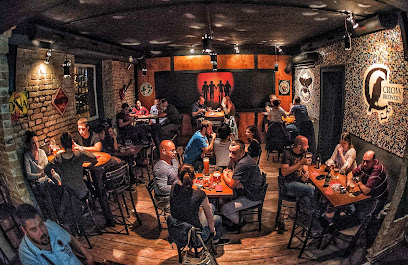
Riddle Bar
0.3 km
Discover Riddle Bar in Belgrade, where innovative cocktails and vibrant atmosphere create an unforgettable nightlife experience.
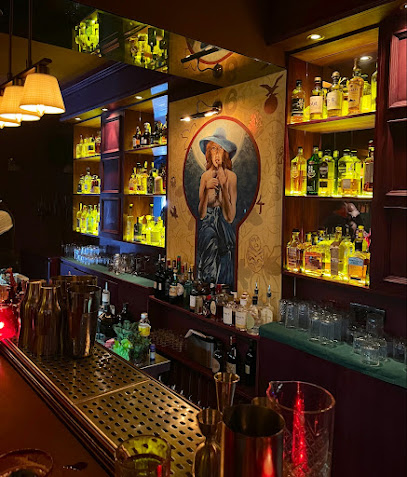
Red bar
0.3 km
Discover the lively Red Bar in Belgrade, where exceptional cocktails and a vibrant atmosphere create the perfect nightlife experience.
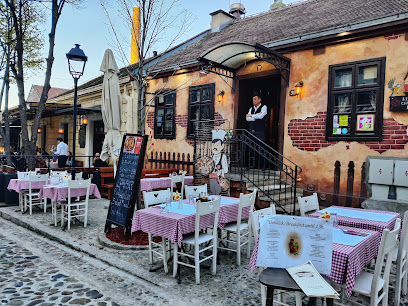
BELGRADE REPUBLIC SQUARE
0.3 km
Experience the vibrant culture and rich history of Belgrade at Republic Square, the city's lively central hub.
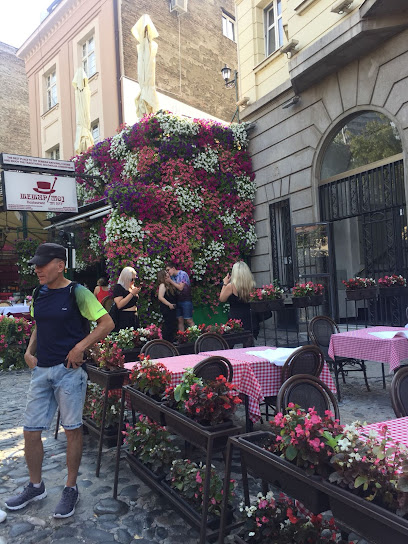
Nula Pet
0.4 km
Experience Belgrade's vibrant nightlife at Nula Pet, a lively bar in the heart of Stari Grad offering a delightful mix of local spirits and a welcoming atmosphere.
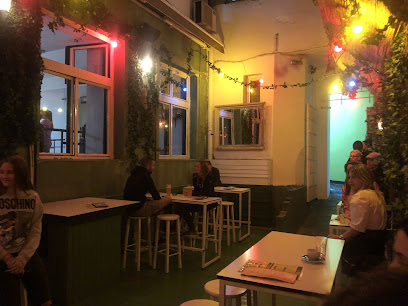
Lady Scarlet - Belgrade Cocktail Bar
0.4 km
Experience the exquisite cocktails and vibrant atmosphere at Lady Scarlet, Belgrade's top cocktail bar in the heart of Stari Grad.
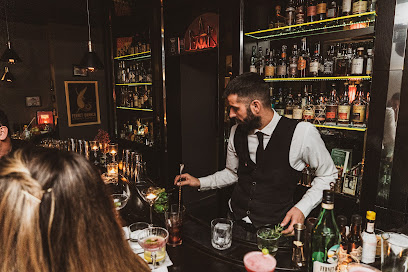
Kafe Bar Blaznavac
0.4 km
Explore Kafe Bar Blaznavac in Belgrade: a perfect blend of art, relaxation, and delightful beverages in a cozy atmosphere.
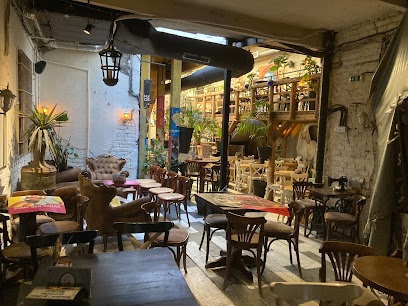
D Bar / Д Бар
0.4 km
Discover the lively atmosphere and creative cocktails at D Bar, a top bar in Belgrade's historic Stari Grad district, perfect for socializing and relaxing.
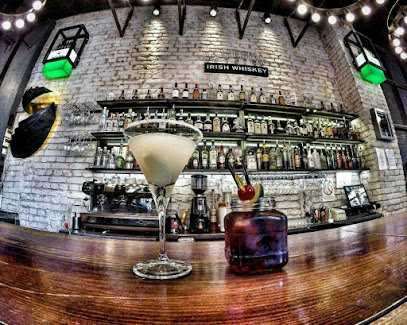
Passengers Bar
0.4 km
Discover the charm of Passengers Bar, where delicious food and drinks meet the vibrant spirit of Belgrade's nightlife.
